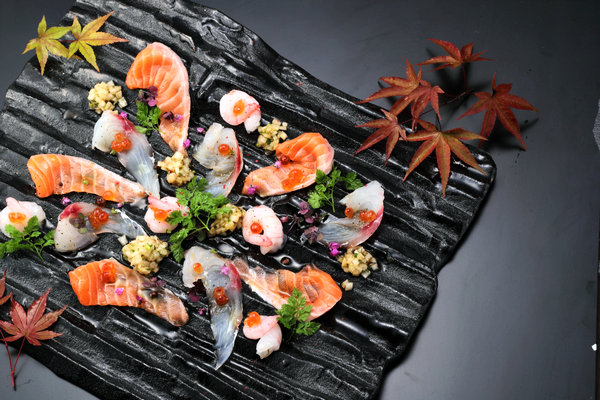Restaurant chain shows its sushi roots
 |
|
[Photo provided to China Daily] |
The Itamae Sushi Edo restaurant, which is modeled after the sajiki-seki box seating in a kabuki theater, features an interior design that conveys the feeling of Japanese tradition through elements such as Japanese panel screens and ukiyo-e paintings. "Edo Food Stand" areas feature ingredients carefully selected from all around the country, and guests can enjoy watching a live performance where Itamae chefs prepare meals on the spot, using the food and cooking style of each guest's choice.
In the Edo period, sushi was lined up in wooden boxes called neta-bako. Inspired by this tradition, the food stands line up neta-bako in neat rows, almost as if they were part of a picture, featuring foods carefully selected from all over Japan. This collection of neta-bako makes for an atmosphere like a "Little Tsukiji" where seasonal foods from all over Japan come together. Guests can choose the food of their preference and also order from a wide range of preparation styles, including sushi, sashimi, sauteed, steamed and boiled.


















